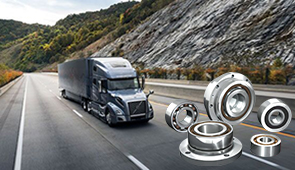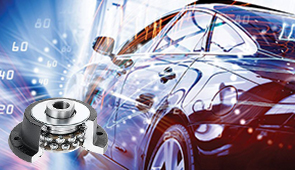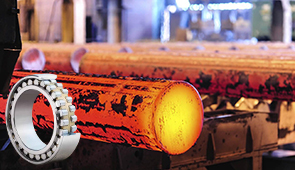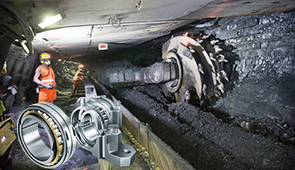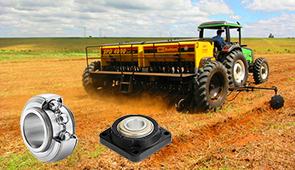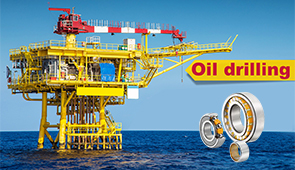Understanding Solid Bearings: The Comprehensive Guide to Ball Bearings, Rollers, and More
Bearings are the silent heroes at the heart of countless machines and mechanisms, enabling smooth rotation and reducing friction in everything from industrial equipment to everyday appliances. Among the vast array of bearing types, solid bearings, including ball bearings, rollers, and similar components, stand out as essential elements of modern engineering. But how do they work, and why are they so critical to the functionality of machinery? This guide will provide a detailed, authoritative exploration of solid bearings, breaking down their types, applications, and the technical principles behind their operation. Whether you’re an industry professional looking to deepen your understanding or are simply curious about the engineering marvels that power our world, this article will serve as your go-to resource for all things related to solid bearings.
What is a Solid Bearing and How Does it Work?

Types of Bearings: From Ball Bearings to Roller Bearings
Every mechanical system involves various movements, so there is a need for friction reduction, which allows for easier movement and protects parts from load wear. Movement allows for complex constructions, and thus requires complex systems of support. A ball bearing and roller bearing are two such types of support that simplify motion allowing for smoother rotational movement while supporting load.
Ball bearings allow for great versatility with minimal frictional loss, as they can withstand both radial and axial loads. As a result, they are particularly suitable for use in turbine motors, electric motors, and the automotive industry. Compact designs, such as needle or spherical roller bearings, allow for the accomplishment of specific engineering objectives, such as weight management for radial loads. These reinforcements are heavily used in industrial machinery as support.
Roller bearings can carry radial loads more efficiently due to the elongated design of their sphere,s which provides a larger surface area for weight distribution. Designs such as cylindrical or tapered roller bearings are heavily used for managing radial loads while also incorporating axial load management, like in tapered roller bearings. As the name suggests, they are widely prevalent in the wheel hubs of several machinery.
The choice of ball and roller bearings depend on the type of load, working speed, and environments. Their designs are improved with newer developments in material science, lubrication technology, and precision engineering to ensure better performance and longer life for more advanced applications.
Key Components: Shaft, Groove, and Slide
Shafts, slides, and grooves are some of the most Important parts used in designing bearings and performing other mechanical functions.
- Shaft: Among the rest of the parts, the shaft assumes the role of the primary rotating part. In other words, it considers performing torque and enacting motion throughout the system. Therefore’s Mechanisms, it is constructed from the highest degree mechanical components that are known to carbon steel, alloy steel, and hardened stainless steel because of their durability regarding stress and deformation. These precisely manufactured components, referred to as shafts, are done using computer-aided techniques, guaranteeing that these devices are aligned accurately with one another in a tailored manner that confronts inconsistencies in vibration, recovering the overall economy of the system and its operational duration.
- Groove: In system components that include bearings or tracks, one would encounter the very same components called ‘rolling elements, ’ which include balls or rollers that maintain the most ideal distribution of the load. Each slot features a profile description that caters to balance radial as well as axial load carry capabilities. This being said, particular refining treatment needs to be applied to grooves because of policies affording rotational wear resistance guarantees and reduction of friction levels for both high spec requirements and load conditions.
- Slide: Maintaining direction enable across or along the length facilitating linear motion is known as providing guided path. This can be witnessed in precision machine tooling where control linear movement is critical and serves as an ideal example of the application of slides. The other part of the components that make up a slide that serve to enhance its performance is low Friction materials like polymer Viscometres or advanced lubricants that maintain the energy loss in the component minimal regardless of the temperature changes to the environment.
crafting and caring for these parts greatly increases their functionality, dependability, and lifespan about mechanical systems. Simulation technologies and material science innovations have enabled engineers to optimize the design of integrating elements like shafts, grooves, and slides for newer applications.
Applications: Pillow Block Bearings and Plain Bearings in Action
Both mechanical and industrial applications utilize pillow block and plain bearings owing to their operational efficiency, flexibility, and capability to handle considerable operational loads. Because of their self-contained housing, pillow block bearings are convenient to install, which makes them suitable for conveyor systems, packaging machinery, and agricultural equipment that are frequently realigned and adjusted in dynamic environments. Their design facilitates quick maintenance and replacement without disassembly, which is critical in high-throughput facilities where downtime must be minimized.
In contrast to plain bearing supports, the latter find use in heavily loaded industrial machines like trucks and aerospace systems, where they provide exceptional reliability during low-speed, high-load operations. The absence of moving components allows the bearings to withstand greater wear and improves life cycle performance, which is critical in applications that involve minimal maintenance and high durability. Due to improvements in composite materials, plain bearings are now able to withstand higher operating temperatures, lower friction thresholds, and greater levels of stress from harsh conditions such as those in offshore or mining equipment.
Individually or together in a system, these are the mechanical parts bearings that form the basic supports to other machine parts. Every application aims to utilize specific design features to maximize energy losses, performance, and maintenance. With changing designs, the use of computational modeling and predictive analytics will improve their adaptability for future machines.
How to Choose the Right Solid Bearing for Your Needs?
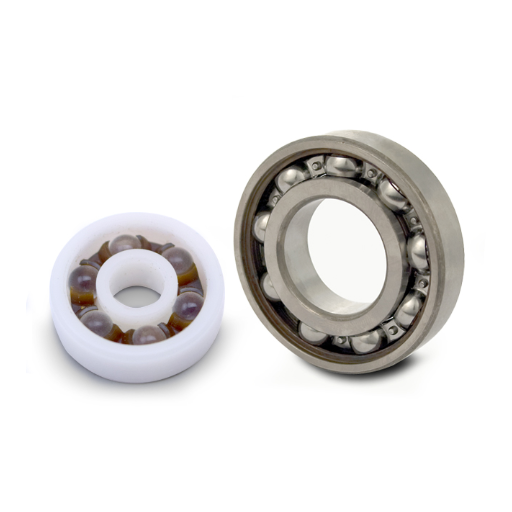
Understanding Load Capacity and Friction
When it comes to choosing the right solid bearing for your application, two main factors to consider are load capacity and bearing friction. The maximum weight or force a bearing can withstand without failing is called load capacity. There are two types of load capacity a bearing can have: static load capacity and dynamic load capacity. The former refers to the bearing’s ability to manage loads while stationary, while the latter pertains to performance during movement. It is important to capture these values accurately because if the load limit is crossed, overheating, deformation, or premature wear can occur.
Bearing lifespan and efficiency are directly affected by friction; for this reason, a minimal coefficient of friction assists an application with precision and energy efficiency. The solid bearing friction reduction is achieved through technological advancements in materials and surface coatings such as self-lubricating materials or advanced polymers. These innovations not only improve performance but also reduce maintenance and operational costs.
Real-world engineering simulations are made possible through computational tools such as finite element analysis (FEA) and tribological testing. Load distribution, friction, and performance can now be evaluated more precisely. Application-specific requirements merged with data-driven techniques strengthen the chances of meeting goals, ensuring the solid bearing is capable of maintaining optimal functionality despite changing thermal, load, and environmental conditions.
Material Considerations: Metal vs. Plastic Bearings
Like all components, metal and plastic bearings have key differences that can make one more suited to a project than the other. These differences include load capacity, how well the bearing can withstand the elements surrounding it, and overall efficiency. Bearing metals like chromium and stainless steel offer incredibly high resistance to pressure and temperatures. The rigidity of the metal allows it to withstand extreme force, which makes it ideal for the industrial sector. On the other hand, metal bearings do depend on some lubrication to reduce friction and can become corroded if not treated properly.
Plastic bearings are preferentially made with advanced polymers. Unlike their metal counterparts, they are lightweight, capable of retaining strength in corrosive environments, and, most importantly, do not need lubrication. They also perform better than plastic at lower speeds, have less noise pollution, and can prove useful in noncorrosive settings. Being able to withstand corrosion makes them optimal for use in conjunction with the military. While they have a few advantages over metal, plastic bearings do have their downfalls. They cannot operate in extreme heat and are generally less resistant to harsh temperatures.
As defined before, bearings are classified as plastic or metal. The selection between the two components rests on an analysis of the bearing’s mechanical requirements, the working environment, and overall budget restrictions. Developments in the science of materials continue to change the division between these two in the form of composite materials constructed to take advantage of the positive features of both while reducing the negative features.
Importance of Bearing Slides and Lubrication
Bearing slides, along with lubrication, are vital for the internal functions of any mechanical system by minimizing the friction and abrasion between the moving parts. Bearing slides, which enable the movement of parts either in a straight line or around an axis, are used in all kinds of machines, from sophisticated robots to large-scale industrial machines. The type of bearing slides selected is influenced by the load-bearing demands, environmental factors as well and the precision needed. To illustrate this point, linear bearing slides used in cleanroom environments are characterized by high precision and resistance to contamination, but those in heavy machinery have more focus placed on being able to withstand impact and strain, as well as durability.
The protective film provided by lubrication, which decreases friction and extends the life of the parts, is an energy saver by increasing the gap between direct metal contact and ideally opposed motion. Oils, greases, and even solid lubricants can serve the purpose; however, a specific type of lubricant is chosen based on temperature, stability, viscosity, and humidity resistance. Under extreme operating conditions, the demand for advanced application fuels the development of high-performance lubricants such as synthetic blends and those enhanced by nanotechnology.
Adjusting bearing slides and their corresponding lubricant to meticulous precision ensures that machinery functions at its most efficient while simultaneously lowering maintenance issues and costs. The increasing sophistication of machinery, including the ability to monitor lubrication and bearing conditions with smart sensors, makes real-time monitoring possible while significantly improving functionality, reliability, and overall operational performance.
What Maintenance is Required for Solid Bearings?
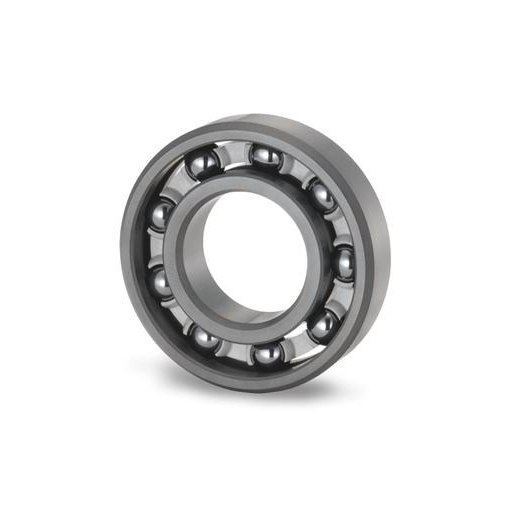
Regular Lubrication and Grease Application
For solid bearings, proper lubrication is paramount for smooth functionality as well as lasting endurance. It alleviates friction, helps with heat dissipation, and minimizes ‘wear and tear’ – that is, in essence, the benefits of proper solid bearing lubrication. Whether a bearing needs to be lubricated or not depends on load, speed, temperature, and any other external factors. Bearings that operate in lighter conditions tend to be less demanding in terms of lubrication and grease compared to those operating under extremely heavy loads or high-speed scenarios.
The right lubricant type has to be used for effective and efficient results. The majority of manufacturers mention the grade of lubricating grease alongside the bearings about viscosity, temperature range, and anti-corrosive properties while also taking into consideration the bearing movement. For instance, lithium-complex greases are favored for their thermal stability, while calcium-sulfonate greases offer enhanced water resistance. Increasingly precise and reliable automatic lubrication systems are now adopted in industrial areas to ensure the right amount of grease is injected into the system without the threat of over or under-lubrication for a controlled and enhanced work environment.
Best practices notice the lubricant condition over a period of time. Technologies like grease analysis and sensor-equipped smart lubricators allow maintenance personnel to check lubrication performance remotely. This approach further augments predictive maintenance models and enhances operational reliability by identifying problems before they escalate into expensive failures.
Signs of Wear: When to Replace Your Bearings
Recognizing persistent surface wear in bearings is important from an engineering perspective, concerning maintaining mechanical functionality and preventing system downtime. Operating noise that exceeds standard levels due to surface damage or misalignment is one of the most common problems. Furthermore, vibrations beyond recognition with a vibration monitor or analyzer tend to signal the destruction of the bearing structure. Supported by further evidence, noticeable spikes in the temperature of the bearing housing can be viewed thermally and can be explained by excessive friction or lubricant failure.
Physical damage such as pitting or spalling on raceways and rolling elements can be easily detected via Optical Microscopy. Moreover, if rotary components are worn out and failing, outer elements may display corrosion or discoloration, making them eligible for replacement. Increased reserve rotational lock step with decreased load-bearing capabilities within prescribed limits may signal the presence of underlying problems. Everything has its limits, and upon the deterioration of one or all supports, action needs to be taken right away to avert prolonged wear and secondary damage inflicted upon other equipment with no added expense.
Implementing sophisticated tracking systems alongside predictive maintenance enables maintenance staff to make proactive bearing replacements at reasonable intervals. This strategy minimizes the chance of catastrophic machine failure while improving reliability for systems, and operational efficiency is assured.
Preventing Contaminant Buildup and Ensuring Service Life
The buildup of contaminants in mechanical systems can cause parts to wear down, fail, and reduce their service life. In order to retain proper functioning, high-efficiency filters should be placed that will capture those contaminants before they invade. Additionally, filters should pass the assessment of rating in micron measurement and compatibility with fluids to ensure total capture of encapsulated dirt, moisture, and abrasive particles.
Aside from installation of filters, regular checks of the system alongside fluid analysis greatly helps in protecting the system from exposure to contaminants. Actionable insight concerning the level of lubricant or hydraulic fluid cleanliness can be acquired using methods such as spectrometric oil analysis and particle counting.
Use of enclosed gears and sealed bearings reduces system exposure to external contamination. Together with correctly stationed desiccant breathers, systems can protect the internal components from moisture. Proper focus on active contaminant control boosts the operational cycles, reduces added maintenance and repair work, and decreases machine maintenance expenditures.
How Do Deep Groove Ball Bearings Differ from Other Types?
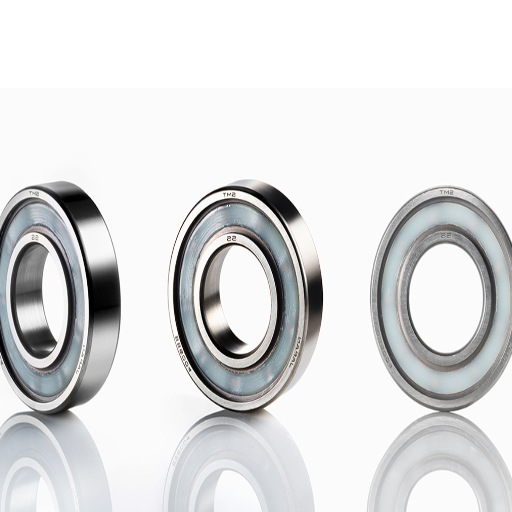
Design and Radial Load Capabilities
The primary purpose of deep groove ball bearings is to support radial loads, however, they can also operate under axial loads. The design incorporates inner and outer rings along with an array of balls, which allows the bearings to support higher radial loads because of the grooves that have been made on the rings. The contact area between the balls and the inner and outer rings is also increased, which reduces friction and ensures that there will be no problems at high speeds.
Deep groove ball bearings are made from high power steel and tougher plastic composites. Such features allow them to endure profound mechanical stress without deformation. Their ability to carry radial loads, which is defined as forces acting at right angles in perpendicular to the axis of the bearing, allows them to be utilized in more advanced systems like electric motors, automotive parts, or industrial machinery.
Deep groove ball bearings are modular. The prescribed tolerances and standard geometric parameters allow their use in various operational environments. Stronger sealing through shields made of rubber or metals keeps dirt out while holding grease, which improves bearing lifetime in harsh ambient conditions.
Advantages of Low Friction and High Speed
To preserve mechanical efficacy and lower energy use, it is crucial to have low-friction and high-speed bearings. The main benefit is the reduction of power loss from friction, which highlights improved efficiency in devices and machinery. By these bearings lowering resistance, motion and operation become easier, which diminishes heat and component wear, resulting in better reliability and longer periods of use without the need for maintenance.
Hybrid bearings consisting of ceramic rolling elements and steel races offer greater lightweight properties alongside improved thermal stability, making them better suited for high-speed aerospace and medical equipment. Their increased capability in achieving high speeds while still retaining precision, coupled with durability, showcases advancements in material science. Furthermore, lower effective energy friction promotes sustainability across a variety of systems, such as wind turbines and electric vehicles.
An additional important benefit is maintaining operational integrity under high-speed conditions without structural degradation, which is particularly important in high-performance fields such as aerospace and robotics. These bearings are also treated with micro-particle lubricants or low-viscosity synthetic oils to enhance rotational performance and microparticle lubricants to sustain extreme performance during rapid rotation. All in all, the achievement of low friction and high-speed designs is a remarkable improvement in technological performance across many fields because it increases the service life of components and energy efficiency.
Common Applications in Machinery and Automotive
A broad variety of machinery and automotive systems rely on precision-engineered bearings. These are crucial components because they enable the system to perform under different conditions. In the case of automotive applications, these types of bearings are used in particular within the wheel hubs, transmissions, and suspension systems because of their contribution to friction and energy reduction. For instance, advanced ceramics are increasingly being employed in the implementation of electric vehicles (EVs) to enable the achievement of higher rotational speeds and lower energy losses, thereby extending battery life.
For rotating devices like electric motors and turbines, the incorporation of superfluid or magnetic bearings offers a virtually frictionless solution. Furthermore, the utilization of high-temperatures bearings in steel production, powergeneration plants, or other power demanding machineries makes them suitable for severe operational conditions. Additionally, they are ideal for aircraft implementations, surgical precision robotics, photovoltaic cells, and other high-performance equipment.
The development of self-lubricating bearings and enhanced material compositions, such as hybrid silicon nitride balls combined with steel races, permits lower maintenance levels and service life extending tactics. These advances highly impact traditional manufacturing and high tech markets that demand extreme reliability and precision enabling the transformation of entire industries in the process.
Can Plastic Bearings Replace Metal Bearings?
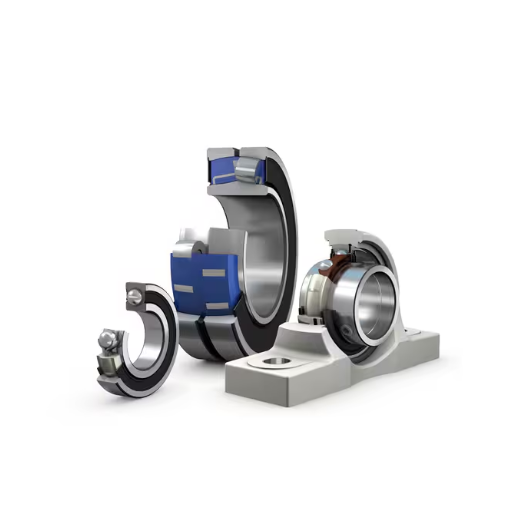
Benefits of Polymer and Self-Lubricating Materials
Self-lubricating materials and polymer bearings are becoming more popular as alternatives to traditional metal bearings due to the number of advantages they offer. Bearings malfunctions due to rust and corrosion, as is the case with steel bearings, polymer bearings stand fortifying against water, chemicals, and abrasive temperatures making them ideal.
Reducing reliance on external lubricants means self lubrication lubricating materials greatly enhance operational efficiency and lessen maintenance. This proves beneficial in medical grade devices and clean shower environments where contamination control is strict and contamination is severely limited.
In comparison to metals, self lubrication supports polymer shafts which lessens the burden on motors and machinery leading to improved overall systemic energy efficiency. Self lubricating composites can withstand dry conditions which decrease downtimes when operations aren’t in motion. Together these factors result in lower operational costs and improve wear resistance.
Finally, new developments in material science have resulted in the production of novel hybrid polymer composites with improved mechanical properties. Such advanced materials enable polymer bearings to operate dependably in rigorous applications and withstand extreme conditions that would damage traditional polymers, increasing their strength, durability, and thermal resistance. These factors make polymer and self-lubricating materials prominently aid advancements in modern engineering, owing to the diverse industrial and high-performance applications they serve.
Comparing Durability and Corrosion Resistance
While considering the polymer bearings’ self-lubricating materials, their wear-resistant properties during long operational intervals are critical. About self-lubricating polymer bearings, they are the most durable due to advanced developments self self-sustaining materials, which suffer low wear and damage over time due to mechanical and thermal stress, especially during heavy compression.
Polymer bearings outperform metal bearings alone due to thier resistance to chemicals, moisture, and harsh atmospherics. Unlike metals that corrode with increasing time due to oxidation, the polymers having non-reactive molecular chains resist chemicals. For instance, polymer bearings that work in saline water and certain acidic compounds do not need treatment to structural integrity.
Polymer bearings can have an operational lifetime approximately 5x longer than comparably sized metal bearings. Additionally, with the development of materials like high-performance thermoplastic composites, these properties are further complemented, enabling these components to sustain increasingly challenging requirements.
The strategic combination of resistance to corrosion and operational durability makes polymer bearings maintenance-free and operationally reliable, streamlining operational workflow.
Cost Efficiency and Injection Mold Techniques
Cost-effectiveness is perhaps the single most notable advantage of polymer bearings, largely due to the automation and accuracy resulting from injection molding processes. The production of sophisticated bearings is rendered efficient because manufacturing processes like injection molding, which is used in polymer bearings, save material and operate within strict tolerances. Unlike traditional machining or other methods of manufacturing, the high-volume production of complex geometries or tailored structures is much cheaper.
Modern polymer injection molding also utilizes sophisticated simulation software, optimizing the material flow, cooling rates, and cavity pressure assisting in better optimization of resource use while maintaining product uniformity. The ease of use with polymers also permits overmolding and the addition of multifunctional features into one part, eliminating steps that require assembling several individual pieces.
In demanding industrial environments, incorporated with, being lightweight and self-lubricating, polymer bearings greatly reduce lifecycle costs. These advancements in technology emphasize the importance of injection molding for the innovation and cost-efficient production of bearings.
Frequently Asked Questions (FAQs)
Q: What are the main differences between ball bearings and roller bearings?
A: Ball bearings and roller bearings differ primarily in contact geometry and load capacity. Ball bearings use spherical balls between the inner and outer race, providing point contact that results in lower friction and higher speed capabilities. They’re ideal for lighter loads and applications requiring precision. Roller bearings, on the other hand, use cylindrical, tapered, or spherical rollers that provide line contact, distributing load across a larger area. This gives them superior load-carrying capacity, making them suitable for heavy-duty applications. Ball bearings typically have higher life expectancy under proper conditions, while roller bearings excel in the harshest conditions where heavy loads are present.
Q: How do flange bearings differ from standard bearings?
A: Flange bearings are specialized bearings with an extended outer race that forms a mounting flange. This flange contains pre-drilled holes that allow for easy attachment to machine surfaces, eliminating the need for separate housings. Unlike standard bearings that require housings or specialized mounting arrangements, flange bearings are essentially one-piece units designed for straightforward installation and alignment. They’re particularly valuable in applications where space is limited or where quick assembly/disassembly is needed. Flange bearings are commonly made from cast iron or other materials depending on application requirements, and they provide excellent support for rotating machinery in various industrial applications.
Q: What materials are commonly used in solid bearings and how do they affect performance?
A: Solid bearings utilize various materials that significantly impact their performance characteristics. Common materials include: – Chromium steel: Offers excellent hardness and durability for general applications – Cast iron: Provides good load capacity and vibration damping at lower costs – Bronze: Exhibits self-lubricating properties and corrosion resistance, ideal for marine environments – Babbitt: A soft metal alloy used in journal bearings for its embedability and conformability – Synthetic polymers: Require no additional lubrication and resist chemicals and moisture Each material affects critical performance factors including load capacity, operating temperature range, corrosion resistance, and friction characteristics. For instance, bronze bearings excel in high-temperature settings where steel might fail, while plastic bearings perform well in applications where moisture absorption would damage metal bearings.
Q: What are journal bearings and when should they be used?
A: Journal bearings are plain bearings that support rotating shafts with a sliding action rather than rolling elements. They consist of a sleeve or bushing (often made of bronze, babbitt, or composite materials) that surrounds a steel shaft. Journal bearings are ideal for applications with heavy loads, high speeds, or where shock absorption is needed. They excel in rotating machinery like turbines, engines, pumps, and compressors. Their advantages include superior load distribution, excellent shock absorption, quieter operation, and simpler design. However, they typically require more careful lubrication management than rolling element bearings. Journal bearings are particularly valuable when diameter constraints exist or when dampening vibration is critical to system performance.
Q: How do I determine the correct clearance for a solid bearing?
A: Determining the correct clearance for a solid bearing involves considering several factors. First, evaluate the operating temperature range, as thermal expansion will affect clearance needs. Higher temperatures typically require greater initial clearance. Second, consider the load type and magnitude—heavier loads generally need tighter clearances to prevent misalignment. Third, assess shaft speed—faster rotations often require more clearance to accommodate oil film formation and prevent overheating. Manufacturer guidelines provide specific clearance recommendations based on bearing type and application. The appropriate clearance prevents premature wear while ensuring optimal performance. For precision applications, consulting bearing engineering tables or using calculation tools that account for material properties, operating conditions, and load dynamics is recommended.
Q: What are the advantages of self-lubricating bearings?
A: Self-lubricating bearings offer numerous advantages in modern machinery applications. These bearings have lubricant molded into the bearing material itself or contained in reservoirs that release lubricant through capillary action. Their primary benefits include reduced maintenance requirements since they require no additional lubrication after installation, making them ideal for hard-to-reach locations. They excel in environments where external lubrication could cause contamination, such as food and packaging or medical devices. Self-lubricating bearings are highly corrosion resistant and can operate effectively in environments with moisture, dust, or chemicals that would degrade conventional bearings. They also eliminate the risk of shutdown due to lubrication failure, extending operational reliability and reducing maintenance costs over their functional lifetime.
Q: How should I maintain solid bearings to maximize their life expectancy?
A: To maximize the life expectancy of solid bearings, implement a comprehensive maintenance program. First, ensure proper lubrication schedules using the correct lubricant type and quantity as specified by manufacturers like SKF. Regularly inspect for contamination, as bearings are susceptible to damage from debris and moisture. Monitor operating temperatures to prevent overheating that accelerates wear. Check for unusual noises or vibrations that might indicate developing problems. Ensure proper alignment of connected components to prevent uneven loading. When handling bearings during installation or maintenance, use clean tools and work areas to prevent introducing contaminants. For applications in harsh environments, consider adding seals or shields for additional protection. Finally, follow manufacturer guidelines for re-lubrication intervals and techniques, which vary based on bearing type, operating conditions, and environment.
Q: What solid bearing types are best for bicycle and ATV applications?
A: For bicycle and ATV applications, specific bearing types excel due to the unique demands of these vehicles. Bicycles typically use sealed ball bearings in wheel hubs, bottom brackets, and headsets because they offer low friction, good durability, and protection against contaminants. Ceramic ball bearings are becoming popular in high-performance bicycles due to their lighter weight and reduced friction. ATVs, facing more demanding conditions, often use tapered roller bearings in wheel hubs to handle both radial and thrust loads encountered during rough terrain navigation. For suspension components in both vehicles, needle roller bearings provide excellent load capacity in compact spaces. Both applications benefit from sealed or shielded bearings that prevent mud, water, and debris from causing premature failure. The diameter and material selection should consider the specific load requirements and environmental exposure of each application.
Q: How do solid bearings perform in environments with extreme temperatures or corrosive conditions?
A: Solid bearings can be engineered to withstand extreme temperatures and corrosive environments, though performance varies by design and materials. For high-temperature applications (above 200°C), special steel alloys, ceramic materials, or graphite-based bearings are employed. In extremely cold environments, bearings with special lubricants and increased clearances prevent binding. For corrosive conditions, corrosion-resistant materials like stainless steel, bronze, plastic composites, or ceramic bearings offer protection where standard chromium steel would deteriorate rapidly. Industries like chemical processing, marine applications, and food processing often require these specialized bearings. Some bearings feature composite materials or coatings specifically designed to resist chemical attack. The key consideration is matching the bearing material and lubrication system to the specific environmental challenges, as even bearings designed for the harshest conditions have operational limits that must be respected to maintain reliability.
UCTH213-40J-300 with Setscrew(inch)
CNSORDERNO: Normal-duty(2)
TOGN: UCTH213-40J-300
SDI: B-R1/8
SD: 2 1/2
UCTH212-39J-300 with Setscrew(inch)
CNSORDERNO: Normal-duty(2)
TOGN: UCTH212-39J-300
SDI: B-R1/8
SD: 2 7/16
UCTH212-38J-300 with Setscrew(inch)
CNSORDERNO: Normal-duty(2)
TOGN: UCTH212-38J-300
SDI: B-R1/8
SD: 2 3/8
UCTH212-36J-300 with Setscrew(inch)
CNSORDERNO: Normal-duty(2)
TOGN: UCTH212-36J-300
SDI: B-R1/8
SD: 2 1/4
UCTH211-35J-300 with Setscrew(inch)
CNSORDERNO: Normal-duty(2)
TOGN: UCTH211-35J-300
SDI: B-R1/8
SD: 2 3/16
UCTH211-34J-300 with Setscrew(inch)
CNSORDERNO: Normal-duty(2)
TOGN: UCTH211-34J-300
SDI: B-R1/8
SD: 2 1/8










